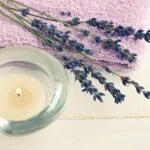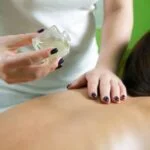Are you looking for a natural way to relieve stress and tension? Learn how to make an aromatherapy heating pad and experience the soothing benefits of this simple DIY project. Aromatherapy heating pads are a popular choice for relaxation, muscle relief, and overall well-being. From choosing the right fabrics to selecting essential oils, this article will guide you through the process of creating your own personalized heating pad.
Aromatherapy heating pads combine the therapeutic benefits of heat and aromatherapy, making them a versatile tool for self-care. By using natural materials and essential oils, these heating pads can provide comfort and relief for various ailments, such as muscle tension, cramps, and stress. In this section is a comprehensive introduction to the world of aromatherapy heating pads; get ready to discover their numerous benefits and how you can create one at home.
Not all heating pads are created equal; in fact, choosing the right fabrics and fillings is crucial for creating an effective aromatherapy heating pad. Materials such as cotton or flannel can offer superior softness and breathability, while fillings like rice or flaxseed can hold heat longer than other materials.
With the correct combination of fabric and filling, your homemade heating pad can provide long-lasting comfort and relief. In the following sections, we’ll take an in-depth look at selecting materials that suit your needs for a truly customized experience.
Benefits of Aromatherapy Heating Pads
Aromatherapy heating pads offer numerous benefits to both physical and mental well-being. These versatile products combine the soothing warmth of traditional heating pads with the therapeutic properties of essential oils, providing relief for a variety of symptoms and ailments. In this section, we will explore the specific benefits of using aromatherapy heating pads and how they can enhance your overall health and wellness.
One of the primary benefits of aromatherapy heating pads is their ability to promote relaxation and stress relief. The combination of heat and essential oils can help ease muscle tension, reduce anxiety, and facilitate a sense of calm and tranquility. Whether you are experiencing physical discomfort or simply need to unwind after a long day, an aromatherapy heating pad can provide much-needed relief.
In addition to their relaxing properties, aromatherapy heating pads are also known for their potential to alleviate pain and discomfort associated with conditions such as arthritis, fibromyalgia, and menstrual cramps. The heat from the pad helps increase circulation and relax muscles, while the essential oils work synergistically to reduce inflammation and soothe aches and pains. This makes them an effective natural remedy for managing chronic pain without relying on medication.
| Benefits | Examples |
|---|---|
| Promotes relaxation | Reduces anxiety |
| Alleviates pain | Effective for arthritis |
Choosing the Right Fabrics and Fillings for Your Heating Pad
When it comes to making your own aromatherapy heating pad, choosing the right fabrics and fillings is crucial in ensuring its effectiveness and safety. The first thing to consider is the fabric for the cover of your heating pad. Natural fibers like cotton and linen are ideal choices as they are breathable and can hold heat well. Synthetic fabrics may not be as effective in retaining heat or allowing the aroma of the essential oils to permeate through.
In addition to the fabric, the filling of your heating pad is equally important. You have several options when it comes to fillings, such as rice, flax seeds, barley, or cherry pits.
These natural fillings are great at retaining heat and can also hold onto the scent of essential oils. Keep in mind that some people may have allergies to certain types of grains or seeds, so it’s essential to consider any potential allergens when choosing a filling for your heating pad.
If you’re making an aromatherapy heating pad for targeted pain relief, you might want to customize its size and shape based on the area of the body where it will be used most often. For example, a long, narrow heating pad may be ideal for soothing neck or back pain while a smaller square-shaped one could be perfect for relieving menstrual cramps.
One key consideration when selecting fabrics and fillings for your DIY aromatherapy heating pad is washability. Choose materials that are easy to clean and maintain so that you can enjoy your homemade creation for a long time without worrying about hygiene. Additionally, make sure that the chosen materials can withstand microwave and oven heat if you plan on using your heating pad as a source of moist heat therapy.
| Aspect | Consideration |
|---|---|
| Fabric | Natural fibers like cotton and linen are ideal choices |
| Filling | Rice, flax seeds, barley, or cherry pits are good options |
| Customization | Consider customizing size and shape based on intended use |
Selecting the Essential Oils for Aromatherapy
When making an aromatherapy heating pad, selecting the right essential oils is crucial to enhance the therapeutic benefits of your heating pad. Essential oils are highly concentrated plant extracts that have various health benefits when used in aromatherapy. Here are some essential oils that you can consider using for your aromatherapy heating pad:
- Lavender: Known for its calming and relaxing properties, lavender essential oil can help reduce stress and anxiety.
- Peppermint: With its invigorating and refreshing scent, peppermint essential oil can help alleviate headaches and improve mental clarity.
- Eucalyptus: This essential oil has decongestant properties that can help relieve respiratory issues and clear the airways.
- Chamomile: Chamomile essential oil is known for its soothing and anti-inflammatory effects, making it a great choice for pain relief.
When choosing essential oils for your aromatherapy heating pad, it’s important to consider your personal preferences and any specific health concerns you may have. You can also create custom blends by combining different essential oils to target specific needs, such as relaxation or muscle tension. Experiment with different combinations to find the perfect blend that works for you.
In addition to selecting the right essential oils, it’s important to consider the quality of the oils you use. Look for pure, high-quality essential oils from reputable suppliers to ensure that you are getting the full benefits of aromatherapy.
Lastly how to make an aromatherapy heating pad wouldn’t be complete without explaining a little about how to add the selected essential oil. Once you’ve chosen your desired essential oil or blend of oils, add a few drops onto the fabric side of your heating pad before use. Be mindful not to add too much as this may cause skin irritation. Start with a small amount and adjust as needed based on personal preference.
Step-by-Step Guide on How to Make an Aromatherapy Heating Pad
Aromatherapy heating pads are a great way to soothe sore muscles and relax the mind with the added benefits of essential oils. Making your own aromatherapy heating pad is a simple and enjoyable DIY project that can be customized to your personal preferences. In this section, we will provide you with a step-by-step guide on how to make an aromatherapy heating pad at home.
Gather Your Materials
The first step in making an aromatherapy heating pad is gathering all the necessary materials. You will need fabric for the outer cover, such as cotton or flannel, as well as filling material like rice or flaxseed. Additionally, you will need your choice of essential oils for the aromatherapy component. Other materials include a sewing machine, scissors, and a funnel for adding the essential oils.
Assembling Your Heating Pad
Start by cutting two identical pieces of fabric into a shape and size that suits your preference for a heating pad. Then, place the two pieces together with the inside facing out and start sewing around three of the edges, leaving one edge open for filling. Once sewn, turn the fabric inside out so that the seams are hidden inside.
Next, use a funnel to fill the pad with your chosen filling material and add a few drops of your preferred essential oil for aromatherapy benefits. Finally, sew up the remaining edge to seal in the filling and complete your aromatherapy heating pad.
Using Your Aromatherapy Heating Pad
To use your homemade aromatherapy heating pad, simply heat it in the microwave for 1-2 minutes (depending on size) and place it on sore muscles or use it for relaxation purposes. The combination of heat therapy and soothing scents from the essential oils will provide relief and promote relaxation. With these simple steps, you can create your own personalized aromatherapy heating pad tailored to your needs and preferences.
Safety Precautions When Using Aromatherapy Heating Pads
Using aromatherapy heating pads can provide numerous benefits, but it is important to use them safely to avoid any potential hazards. Here are some safety precautions to keep in mind when using aromatherapy heating pads:
- Check the heating pad for any damage or wear and tear before each use
- Avoid falling asleep with the heating pad on to prevent burns or overheating
- Do not overheat the pad, as this can cause skin irritation
- Keep the heating pad away from water and moisture to prevent electric shock
It is also essential to follow the manufacturer’s instructions for proper usage and care of the heating pad. Additionally, be sure to use a cover or cloth between your skin and the heating pad to prevent direct contact and potential burns. Lastly, do not use an aromatherapy heating pad on infants, young children, or individuals with sensitive skin without consulting a healthcare professional.
By following these safety precautions, you can enjoy the benefits of aromatherapy with peace of mind and minimize any risks associated with using a heating pad for this purpose.
Remember that essential oils can be potent and may cause allergic reactions in some individuals. It is always wise to perform a patch test before using any new essential oil on your heating pad. If you experience any discomfort or adverse reactions while using an aromatherapy heating pad, discontinue use immediately and seek medical advice. Your safety is paramount when incorporating aromatherapy into your wellness routine.
Tips for Maximizing the Aromatherapy Benefits of Your Heating Pad
Use the Right Essential Oils
When using aromatherapy heating pads, it’s important to choose the right essential oils that will provide maximum benefits. Lavender oil is known for its calming and relaxing properties, making it a popular choice for heating pads. Peppermint oil is great for alleviating headaches and muscle pain, while eucalyptus oil is effective for respiratory issues. You can also mix and match essential oils to create your own customized blend based on your specific needs.
Practice Deep Breathing Techniques
To fully experience the benefits of aromatherapy, it’s helpful to practice deep breathing techniques while using a heating pad. Close your eyes, take slow and deep breaths, and focus on the soothing aroma of the essential oils. This can help promote relaxation, reduce stress, and enhance the overall therapeutic effects of the heating pad.
Set the Mood
Create a calming environment when using your aromatherapy heating pad by dimming the lights, playing soft music, or lighting some candles. By setting a relaxing mood, you can further enhance the aromatherapy experience and maximize its benefits. It’s all about creating a tranquil space where you can fully unwind and destress while enjoying the soothing warmth and aroma of your heating pad.
By following these tips, you can make the most out of your aromatherapy heating pad and truly reap its therapeutic benefits. Remember to use high-quality essential oils, practice deep breathing techniques, and set a peaceful ambiance for an optimal aromatherapy experience.
Alternative Uses for Aromatherapy Heating Pads
In conclusion, aromatherapy heating pads are a versatile and beneficial tool for relaxation and therapeutic use. While they are commonly used for relieving muscle tension and promoting relaxation, there are also alternative uses for these pads that can provide additional benefits. From providing comfort during menstrual cramps to soothing headaches, the versatility of aromatherapy heating pads makes them a valuable addition to any self-care routine.
One alternative use for aromatherapy heating pads is to alleviate menstrual discomfort. The gentle warmth and calming scent of essential oils can help ease the pain and discomfort associated with menstrual cramps. By placing the heating pad on the lower abdomen, it can provide soothing relief, allowing for a more comfortable experience during menstruation.
Another alternative use for aromatherapy heating pads is to relieve headaches. Whether it’s from stress, tension, or sinus issues, the warmth from the pad along with carefully selected essential oils can provide soothing relief for headache symptoms. Simply place the heating pad on your forehead or back of the neck to enjoy its comforting effects.
In addition to these alternative uses, aromatherapy heating pads can also be used as a natural remedy for back pain, chest congestion, or even as a warm compress for sore muscles. By incorporating different essential oils and using various fabrics and fillings, you can customize your heating pad to address specific needs. With proper care and attention to safety precautions, aromatherapy heating pads can be a valuable tool in promoting overall well-being and relaxation.
Frequently Asked Questions
How Do You Make a Scented Heating Pad?
To make a scented heating pad, start by choosing a fabric and cutting it to your desired size. Then, sew three sides together and leave one side open for filling. Mix rice or flaxseed with your choice of essential oils and fill the pad. Lastly, sew the remaining side shut and heat in the microwave.
What Essential Oils Are Good for Heating Pads?
Some good essential oils for heating pads are lavender, eucalyptus, peppermint, and chamomile. Lavender is known for its relaxation properties, while eucalyptus and peppermint can help relieve muscle aches. Chamomile is great for promoting sleep and relaxation.
What Is the Best Ingredient for Homemade Heating Pad?
One of the best ingredients for a homemade heating pad is rice. It holds heat well and can be easily scented with essential oils. Another great option is flaxseed, which also retains heat effectively. Both are readily available and affordable options for making a DIY heating pad.

Are you looking for a natural way to improve your health and wellbeing?
If so, aromatherapy may be the answer for you.





